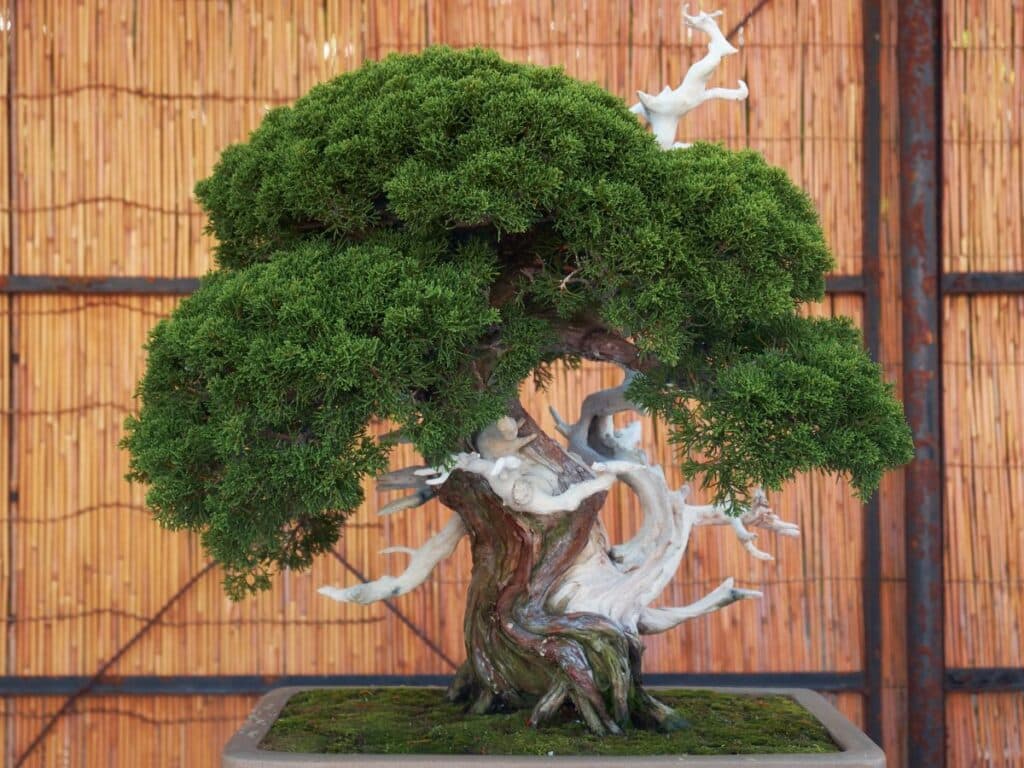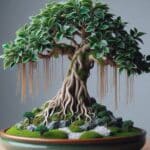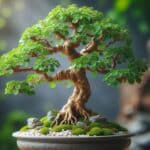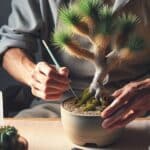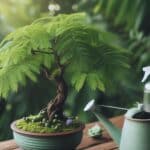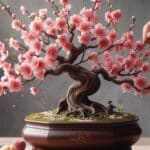The humble juniper is one of the most common species for landscaping and indoor growing – and when it comes to bonsai growing, Shimpaku juniper bonsai tree is a smart choice.
The juniper genus is a large one, including up to 70 different species in the cypress family. All of them are evergreen coniferous shrubs or trees, a popular category when it comes to bonsai growing. Among them, the Shimpaku juniper, or Juniperus chinensis ‘Shimpaku,’ is one of the most common.
If you are interested in growing a bonsai plant that will offer interest and gorgeous visual appeal to your collection, consider growing the Shimpaku juniper bonsai trees.
Interesting Facts about Shimpaku Juniper
- Height: 1’
- Width: 2’
- Sunlight: Full sunlight
- Flowering Time Length: Does not flower
- Lifespan: 350+ years
- Scientific Name: Juniperus chinensis ‘Shimpaku’
Growing Shimpaku Juniper from Seed or by Propagation
This plant can be propagated from seed or by cutting, though growing from seed will take significantly longer than the alternative.
The “pre-bonsai” stage of a Shimpaku Juniper means it’s at a point where it’s ready for initial shaping and styling. When you purchase a pre-bonsai Shimpaku Juniper, you can certainly decide on the design of the tree such as formal upright, slanting, or cascading, to name just a few.
Taking care of a bonsai, especially a Shimpaku Juniper pre-bonsai involves ensuring it receives adequate sunlight, maintaining a regular watering schedule without overwatering, providing appropriate nutrients through fertilizing, and protecting it from extreme weather conditions.
How to Care for Shimpaku Juniper Bonsai Trees
Here’s how to care for juniper trees:
Sunlight
The best location for your Shimpaku juniper bonsai will be in a bright location that receives lots of sunlight. This plant is not well-suited to indoor growing and does much best with outdoor growing, even in cold climates. If temperatures drop below 15 degrees Fahrenheit, you may need to protect the tree from frost with some mulch or a cover.
In some cases, the Shimpaku juniper will change its foliage color in cold weather, with the once-green foliage turning a deep purple-brown.
This is nothing to worry about – it is just a method of frost protection and does not mean your plant is dying back. The foliage will turn green again once the weather warms.
Watering
Try not to overwater your Shimpaku juniper plant. The roots of this plant do not like excessive soil wetness. The soil should be somewhat dry when you water. You can also regularly mist your plant, which is beneficial especially after the tree has been repotted.
Fertilizing
Fertilize your Shimpaku juniper with organic pellets once per month during the growing season – you can also use a liquid fertilizer once a week. It may benefit your plant’s foliar development to apply high-nitrogen fertilizer in the spring, too.
Potting and Repotting
Repot your Shimpaku juniper once every two years. Place it in a bonsai pot with well-draining soil mixture. Avoid aggressively pruning the roots when you repot (do not remove more than a quarter of the roots when you do so).
Wiring and Pruning Shimpaku Juniper
When it comes to pruning your Shimpaku juniper tree, one of the best things you can do is to limit aggressive trimming and only prune undesirable branches.
Many people make the mistake of trimming their bonsai trees like they would with typical hedge-growing – removing all the growing tips will cause the tree to weaken and the needles to become brown.
Instead, just pinch long shoots that jut out of the tree’s silhouette. You can do this throughout the growing season, and you can also thin dense foliage pads with a pair of sharp scissors, cutting at the base. Otherwise, the tree withstands pruning well, as long as you make sure there is some foliage left on any branch you intend to keep alive.
You can also wire your Shimpaku juniper bonsai tree when it is young. In fact, creating a dramatic, twisted shape with your tree is a popular technique that will allow the juniper bonsai to grow in a form that mimics how it would grow in its natural environment.
Pests and Diseases
As long as your juniper bonsai is well cared for and placed in the ideal location, you shouldn’t have to worry about too many diseases or pests. Pruning the foliage pads to make sure they do not get too dense can help keep pests away, as it gives them fewer places to hide.
Check your juniper bonsai for pests regularly, particularly in the winter. The most common pests to watch out for (all of which can be treated with insecticides or miticides) include juniper scale, juniper needle miners, juniper webworms, juniper aphids, and spider mites.
Fungal rust disease is another issue. These can be prevented by growing resistant cultivars and by using a fungicide.
Where to Buy Juniper Shimpaku Bonsai Trees
You can find all juniper species, including Japanese garden junipers like green mound juniper, Chinese juniper, and Japanese juniper, in addition to the shimpaku juniper, at most home improvement and gardening supply stores, like Home Depot, Lowes, and even Walmart!
However, you will have the best results if you purchase your Shimpaku juniper bonsai trees from a specialty dealer online that works exclusively with bonsai plants. This will enable you to receive a plant that is uniquely adapted to the bonsai style of growing.
You can find well-suited junipers at bonsai dealers, where traders typically offer young plants, pre-styled, and pre-bonsai plants in addition to high-value bonsai for sale.
*image by zastavkin/depositphotos

